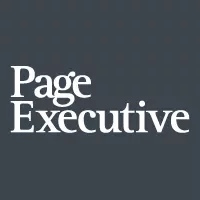Looking to hire your next leader?
Get in touch with one of our consultants now to discuss your leadership talent requirements.


![]()
The good news? We’ve got data to shed light on this. Drawing from two major reports — PageGroup’s Talent Trends 2024 study of 50,000 professionals and Page Executive’s Exclusive Leadership Edition — we’ll uncover the insights you need to bridge the gap between what leaders can offer and what today’s skilled professionals really want.
Half of business leaders report struggling to find the right fit, despite the global talent pool. But this challenge isn’t evenly spread. In North America, only 34% of leaders face this issue, while in Europe and South America, it jumps to 55% and 57%.
This talent shortage spans industries, whether it’s finance, procurement, engineering or HR. So, why is it so hard to fill key roles?
A major factor is the mismatch in salary expectations. 44% of leaders say meeting candidates' financial expectations is a challenge. Top talent knows their worth, and it’s tough for companies to keep up, especially with economic pressures mounting.
Then there’s the skills gap. Another 44% of leaders are struggling to find the right expertise in the current talent pool. As industries evolve and new tech emerges, the demand for specialised skills keeps rising, but the supply? Not so much.
Cultural fit is another piece of the puzzle. 36% of leaders say they’re finding it hard to find candidates who mesh with their company’s values and dynamics. It’s not just about filling the position; it’s about ensuring the person will thrive with the team.
34% of leaders also report a flat-out lack of applicants for some roles. This could be due to less interest in certain sectors, fierce competition or even geographic hurdles.
Interestingly, flexible work isn’t as much of a barrier as you might expect in today’s remote-friendly world. Only 20% of leaders see this as an issue, likely because many companies have adapted to hybrid or fully remote setups that align with modern employee expectations.
To attract and retain top performers, it's essential to get inside the minds of today's workforce. It's not just about the paycheck anymore—employees are seeking a more holistic approach to their careers that balances compensation with personal fulfillment and growth.
Yes, salary is still a major motivator. In fact, over half of job seekers are actively chasing higher-paying roles. But economic realities limit how much companies can realistically offer. This leaves a gap between what employees want and what you can provide.
Fortunately, compensation isn’t your only bargaining chip. The Talent Trends survey highlights that work-life balance is climbing the ranks of importance, coming in just behind salary. Employees are increasingly valuing their time and wellbeing, sometimes even more than an extra bump in pay. They're looking for roles that allow them to excel professionally without sacrificing personal commitments or burning out.
Management style also plays a huge role. Supportive, empowering leadership can drastically improve job satisfaction. People want to feel heard and trusted, and they thrive under managers who offer growth opportunities rather than micromanaging every detail.
Here’s how to align compensation with expectations:
Flexibility in work arrangements has shifted from a nice-to-have to an expectation. Employees now crave autonomy over their schedules and the freedom to work from locations that suit them best.
Rigid policies requiring full-time office attendance? They’re driving talent away. In fact, 53% of employees who’ve been called back to the office are actively looking for new jobs. This trend shows just how beneficial it is to offer hybrid or fully remote options. Accommodating these preferences doesn’t just meet employee demands—it also opens up a global talent pool and boosts overall satisfaction.
Here’s how to embrace flexibility and promote work-life balance:
In many markets and industries, flexibility has moved from a nice-to-have to a dealbreaker. Employees want more than a token nod to hybrid work; they crave real autonomy over how, where and when they work. If companies fail to offer this, they aren't just missing out on fresh talent—they risk losing the top performers already on their payroll.

Beth Horsley
Partner UK
Diversity, Equity, and Inclusion (DE&I) aren’t just corporate catchphrases—they’re vital components of a healthy workplace culture. With today’s workforce more diverse than ever, employees expect diversity to be both reflected and respected within their organisations.
However, there's a noticeable gap between DE&I initiatives and employee perceptions. Only about one-third of workers believe their workplace is truly inclusive, and less than 20% are confident in the diversity of their senior leadership. These numbers highlight a significant area for improvement.
Discrimination remains a serious issue, too. Around two-thirds of employees who experience it stay silent, often out of fear of retaliation or doubt that reporting it will lead to change. This silence chips away at trust and can fuel a toxic work environment. Tackling these issues isn’t just the right thing to do—it’s essential for retaining top talent who value inclusivity and fairness.
Here's how to strengthen your diversity, equity and inclusion efforts.
Artificial Intelligence (AI) isn’t some far-off concept—it’s already here, and it’s reshaping workplaces across industries. In fact, over half of workers believe AI will impact their long-term career plans, and about a third are already using AI tools in their roles today.
But with innovation comes anxiety. Employees worry about their job security and how AI might redefine their work. Here’s where leaders can shine: by acknowledging these concerns and offering support and training, you can help your team not just adapt but thrive in an AI-driven environment. Focusing on the human skills AI can’t replicate—like creativity, emotional intelligence and complex problem-solving—will be vital for keeping your people motivated and engaged.
Here's how to tackle AI changes side by side with your team:
The future of work isn't humans vs. machines; it's humans working smarter with machines. Embrace AI to free your team from the mundane and let them focus on what truly matters.

Peter Kitchin
Managing Partner, North America
There’s no universal formula for attracting, engaging and retaining the talent you need. What clicks in New York might flop in Singapore. What appeals to a seasoned Baby Boomer might leave an up-and-coming Millennial cold.
Page Executive can help you tailor your talent strategy so that it flexes with the times while staying true to your core values. Get in touch with us today — let’s future-proof your talent strategy together.
Get in touch with one of our consultants now to discuss your leadership talent requirements.

Choose your country from the list below to complete the brief form:


